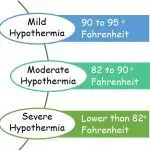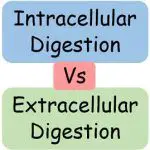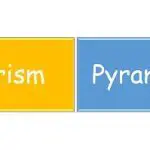Hypothermia and hyperthermia are the situations related to overwhelmed body temperatures. Our body functions optimally around 37 °C. The body can withstand the change of a few degrees up and down, but things might start malfunctioning if the temperature fluctuates beyond that. Hypothermia, on the one hand, happens when you get exposed to a cold, wet or windy environment for … [Read more...] about Difference Between Hypothermia and Hyperthermia
Difference Between Intracellular and Extracellular Digestion
The digestion process varies according to the level of complexity of the organisms. Living organisms exhibit two different methods of digesting food- intracellular and extracellular digestion. Single-celled organisms that lack proper channels to extract the nutrients from the taken food perform intracellular digestion. Here, the process of digestion occurs inside the cell, … [Read more...] about Difference Between Intracellular and Extracellular Digestion
Difference Between Sleep and Rest
You certainly might not have thought that sleep and rest are two different things. Although they aim for the same thing, i.e., to relax the body both physically and mentally, they are two different processes. Resting is a state where our body is chilled out from a stressed routine. It is a kind of activity that a person frequently does in order to regain his lost freshness … [Read more...] about Difference Between Sleep and Rest
Difference Between Prism and Pyramid
People often get confused between prism and pyramid due to their very similar appearance. But there are plenty of differences that distinguish them into two geometrical categories. The prism, on one hand, has two bases that are congruent to each other. Its sides are rectangular in shape. As well as these sides are perpendicular to both the bases. In contrast, the pyramid … [Read more...] about Difference Between Prism and Pyramid
Difference Between Neurosis and Psychosis
We divide psychiatry into Neurosis and Psychosis for a convenient outlook and thorough studies. The professionals assert that these two terms vary greatly concerning their symptoms, pathology, treatment and prognosis. We can understand that a neurosis is actually a group of light mental disorders. And they occur due to functional impairment rather than an organic cause. On … [Read more...] about Difference Between Neurosis and Psychosis





